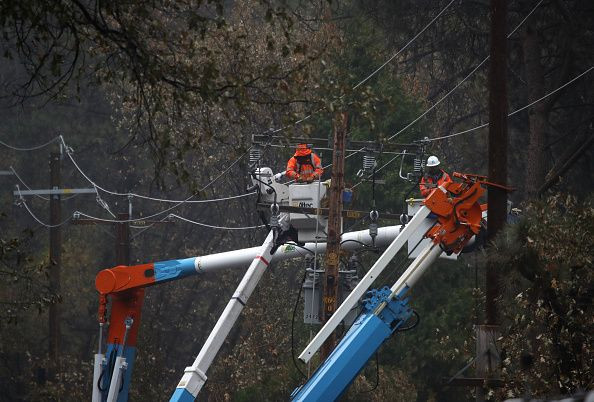PG&E Bankruptcy Filing: What's Next For The Utility And What It Means For Customers

After PG&E (PCG.F) announced Monday that it would be filing for Chapter 11 bankruptcy protection, concerns over how the company will continue to operate have emerged. While this is not the first time that PG&E has filed bankruptcy, the recent announcement aligns with liabilities for the 2017 and 2018 Northern California wildfires.
Because of its involvement in the wildfires, PG&E is facing upwards of $30 billion in lawsuits. The company filed for the Chapter 11 protection for the second time in 18 years.
For the 16 million customers of PG&E, there is still assurance that the company will continue to provide uninterrupted electric and natural gas services. The San Francisco-based company said in its bankruptcy announcement: “We do not expect any impact to natural gas or electric service for our customers as a result of the Chapter 11 process.”
Filing for Chapter 11 bankruptcy does not mean that PG&E is going out of business, rather it is restructuring to better handle its debt and the impending lawsuits that are coming down the pipeline.
PG&E has also said that it does not expect any interruption in employee pay during the Chapter 11 filing and restructuring process. Because Chapter 11 protection allows for continued operation, there is not an overwhelming concern that the company will shutter its doors during the process.
It is, however, unclear whether PG&E will need to increase its rates to remain solvent and emerge from bankruptcy. There has been a wait-and-see approach based on the level of debt that PG&E emerges with after the Chapter 11 filing, the Mercury News reported. If PG&E can resolve its debt issues, this could result in a rate increase for customers, but this would have to be approved by California’s Public Utilities Commission.
Employees of PG&E may need to keep a watchful eye as there could be layoffs in the wake of the Chapter 11 process. The court will require that the company keep its costs to a significant minimum, which could mean cuts of unnecessary costs or even a reduction in pension plans.
Stock options with the company may also diminish as has been witnessed since the bankruptcy announcement. With shares trading as high as $70 in August of 2017, the recent 50 percent crash to $8 a share on Monday is a real challenge for stockholders.
Officials have found that PG&E was allegedly partially to blame for the California wildfires when a powerline sparked and fell in dry and windy weather, the Mercury News reported. The Campfire wildfires were claimed to be caused by a high voltage line that had mechanical problems, according to the news outlet.
The Campfire wildfires were the deadliest in California’s history, killing 86 people and destroying 14,000 homes. It is estimated that there is $16 billion in damages to the area from the fires.
Shares of PG&E plummeted 25.37 percent on Wednesday to close at $5.00.
© Copyright IBTimes 2024. All rights reserved.



















